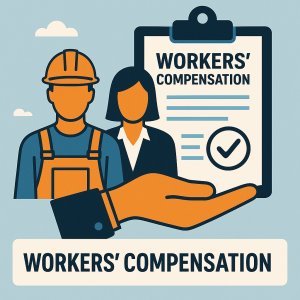
Georgia Workers’ Comp Requirements—Recruitment Agencies
September 5, 2025
Insurance Carrier Change: Timing Your Move to Cut Workers Comp Costs
September 5, 2025In today’s dynamic employment landscape, companies increasingly rely on Employers of Record (EOR) to streamline workforce management, especially for contingent and remote workers. While leveraging an EOR can bring significant operational advantages, understanding the associated costs-particularly workers’ compensation expenses-is critical for maintaining financial efficiency and compliance. This article explores the key factors influencing the cost of workers’ compensation when engaging an Employer of Record,providing businesses with essential insights to make informed decisions and optimize their workforce strategy.
Table of Contents
- Understanding Workers’ Compensation costs in the Employer of record Model
- Key Factors Influencing Workers’ Comp Premiums for Employers of Record
- Strategies to Optimize Workers’ Compensation Expenses Without Compromising Coverage
- Best Practices for Managing Risk and ensuring Compliance in Workers’ Compensation Programs
- Q&A
- In Conclusion
Understanding Workers’ Compensation costs in the Employer of Record Model
When leveraging an Employer of Record (EOR) for workforce management, understanding how workers’ compensation costs are structured is crucial for budgeting and risk management. The EOR typically pools multiple clients’ employees under a single insurance policy, which can lead to more competitive premium rates compared to individual policies. However, costs are influenced by several factors including the industry risk classification, employee job functions, and historical claim rates. Additionally, the EOR may factor administrative fees into the workers’ comp costs, so openness in billing and contract terms is essential for employers to avoid unexpected expenses.
Employers should also consider these key components that impact workers’ compensation expenses within the EOR model:
- Payroll Size: Premiums are frequently enough calculated as a percentage of total payroll processed through the EOR.
- State Regulations: Workers’ comp laws vary substantially by jurisdiction, affecting cost and coverage.
- Claim History: Both the EOR’s aggregated claims experience and the specific employer’s risk profile influence premiums.
- Safety Programs: Employers with robust workplace safety initiatives may benefit from reduced rates.
| Factor | Impact on Cost |
|---|---|
| Payroll Size | Direct correlation – higher payroll,higher premiums |
| Industry Risk | High-risk industries face elevated rates |
| State of Employment | Varies due to differing legal requirements |
| Claims History | Frequent claims can increase premiums |
Key Factors Influencing Workers’ Comp Premiums for Employers of Record
Understanding the determinants behind workers’ comp premiums is crucial for Employers of Record aiming to manage costs effectively. One of the primary drivers is the industry classification of the workforce, as certain sectors inherently carry higher risks, such as construction or manufacturing. Additionally, the claims history significantly impacts premium rates; a company with a track record of frequent or severe claims will face higher costs due to perceived risk. Employers of Record must also consider the payroll size as premiums are calculated based on total payroll exposed to risk, making thorough labor data management essential.
Other critical components influencing premiums include:
- Safety Programs: Proactive injury prevention initiatives can reduce incident rates and lower costs.
- State Regulations: Jurisdiction-specific laws and benefit requirements affect premium calculations.
- Experience modification Rate (EMR): This factor adjusts premiums based on an employer’s historical safety performance relative to industry average.
By strategically addressing these factors, Employers of Record can enhance their risk profiles, leading to more competitive workers’ comp premiums and improved financial outcomes.
Strategies to optimize Workers’ Compensation Expenses Without Compromising Coverage
Maximizing cost efficiency in workers’ compensation demands a balanced approach that safeguards employee benefits while tightening budget controls.Begin by conducting thorough risk assessments to identify and mitigate workplace hazards proactively. This not only reduces the frequency of claims but also enhances workplace safety culture.Additionally, partnering with experienced claims administrators can streamline the resolution process, preventing needless legal expenses and claim inflate.
Consider incorporating the following best practices:
- Implement early intervention programs to accelerate employee recovery and reduce lost workdays.
- Leverage data analytics to forecast claim trends and adjust premiums strategically.
- Offer tailored safety training focused on high-risk roles.
- Negotiate with insurers for competitive rates without compromising coverage limits.
| Strategy | Benefit | Cost Impact |
|---|---|---|
| Early Claim Reporting | Faster resolution | Reduces overhead |
| Targeted Safety Training | Lower injury rates | Decreases claims |
| Data-Driven Premium Negotiation | Better pricing | Optimizes budget |
Best Practices for Managing Risk and Ensuring Compliance in Workers’ Compensation Programs
Effectively managing risk within workers’ compensation programs starts with thorough compliance oversight and proactive engagement with all stakeholders. Employers should invest in comprehensive training programs tailored to safety protocols and proper injury reporting procedures. Additionally, partnering with an experienced Employer of Record (EOR) can significantly streamline compliance by ensuring that all regulatory mandates are adhered to, thus reducing the likelihood of costly audits or penalties.Maintaining up-to-date records and conducting regular safety audits are indispensable steps in identifying potential hazards before they lead to workplace injuries.
Leveraging data analytics is another key strategy for minimizing risk and controlling workers’ compensation costs. Employers can track claims trends and assess the effectiveness of mitigation efforts through detailed reporting dashboards. Below is a snapshot of standard metrics that organizations should monitor to enhance decision-making and cost control:
| Metric | Purpose | Benefit |
|---|---|---|
| Claim Frequency | Track number of claims over time | Identify safety issues early |
| Average Cost per Claim | Analyze cost trends of claims | Optimize resource allocation |
| Return-to-Work Rate | Measure rehabilitation success | reduce long-term disability expenses |
Q&A
Q&A: Understanding the Cost of Workers’ Compensation Through an Employer of Record
Q1: What is an Employer of Record (EOR)?
A1: An Employer of Record (EOR) is a third-party organization that serves as the official employer for tax, compliance, and payroll purposes. Companies use an EOR to hire employees in different states or countries without establishing a legal entity there, simplifying staffing and regulatory complexities.
Q2: How does workers’ compensation coverage work with an Employer of Record?
A2: When using an EOR, the workers’ compensation policy is typically provided and managed by the EOR. the EOR assumes the role of the employer for workers’ comp insurance purposes, ensuring compliance with local laws and handling claims on behalf of the client company.
Q3: What factors influence the cost of workers’ compensation under an EOR?
A3: Several factors affect workers’ comp costs with an EOR: the employee’s job classification and associated risk level, the jurisdiction’s statutory rates, the EOR’s experience modification rate, payroll size, and any claim history. the EOR pools multiple clients’ employees, which can impact pricing positively or negatively.
Q4: Are workers’ compensation rates typically higher when using an Employer of Record?
A4: Rates may be slightly higher when working with an EOR due to administrative fees, risk pooling from various clients, and added compliance management. Though, these costs frequently enough are offset by savings on legal entity setup, regulatory risk mitigation, and streamlined HR processes.
Q5: How does the EOR structure affect employer liability for workers’ compensation claims?
A5: Under an EOR arrangement, the EOR assumes primary employer liability for workers’ compensation claims. This shields the client company from direct exposure to claims-related risks, although contractual indemnification terms should be carefully reviewed.
Q6: Can companies reduce workers’ compensation costs when using an Employer of Record?
A6: Yes. Companies can collaborate with their EOR to implement robust safety programs, control job classifications accurately, and maintain a strong claims management process. Transparent dialogue and proactive risk management can definitely help lower premiums.
Q7: What should businesses consider before outsourcing workers’ compensation to an Employer of Record?
A7: Businesses should evaluate the EOR’s compliance expertise, claims handling effectiveness, cost transparency, and contractual protections.Understanding the impact on costs, liabilities, and employee experience is critical to making an informed decision.
Q8: Is workers’ compensation coverage through an EOR compliant with local regulations?
A8: A reputable EOR will ensure full compliance with local workers’ compensation regulations as they specialize in managing employment law complexities. Clients should confirm the EOR’s certifications and regulatory track record.
This Q&A provides a comprehensive overview of workers’ compensation costs and considerations when working with an Employer of Record, aiding businesses in making strategic employment decisions.
In Conclusion
understanding the cost implications of workers’ compensation when engaging an Employer of Record is essential for organizations aiming to manage risk and control expenses effectively. While leveraging an Employer of Record can streamline workforce management and compliance,it is indeed crucial to evaluate the associated workers’ comp costs within the broader context of your business needs and operational goals. By conducting thorough due diligence and partnering with a reputable provider, employers can ensure appropriate coverage, mitigate financial exposure, and maintain a compliant, productive workforce. Ultimately, a strategic approach to workers’ comp costs will support sustainable growth and long-term success in today’s dynamic labor market.
“This content was generated with the assistance of artificial intelligence. While we strive for accuracy, AI-generated content may not always reflect the most current information or professional advice. Users are encouraged to independently verify critical information and, where appropriate, consult with qualified professionals, lawyers, state statutes and regulations & NCCI rules & manuals before making decisions based on this content.








